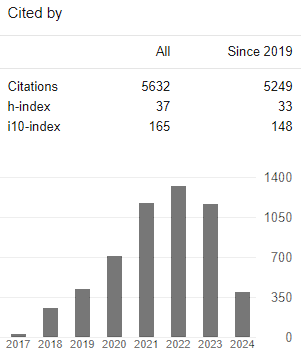Work and knowledge of mother readiness in exclusive breastfeeding
Keywords:
Work, Mother, Readiness, Knowledge, Exclusive breastfeedingAbstract
Knowledge of exclusive breastfeeding has been proven, through previous studies, as one of the factors that affect the readiness of pregnant mothers in exclusive breastfeeding. It is also widely reported about the job or profession mothers (especially those done outside the home) as factors inhibiting the implementation of exclusive breastfeeding. This study aims to examine the role of the moderator job as the relationship between knowledge of exclusive breastfeeding with maternal readiness in exclusive breastfeeding. Cross-sectional study performed on pregnant women with first child, a sample of 139 respondents was taken to the criteria does not work (housewives) or working outdoors. Enclosed questionnaire was used to measure the knowledge and readiness of mothers in exclusive breastfeeding. The data analysis technique used is the linear regression model. The results showed that the significant effect of knowledge on the readiness of pregnant women at work (R = 0.412; p = 0.002) but not significant in pregnant women who do not work (R = 0.187; p = 0.086). It can be concluded that the work has a role as moderator effect of exclusive breastfeeding knowledge about the readiness of pregnant mothers in exclusive breastfeeding.
Downloads
References
Creswell, J. W., & Creswell, J. D. (2017). Research design: Qualitative, quantitative, and mixed methods approaches. Sage publications.
D’Ambruoso, L., Achadi, E., Adisasmita, A., Izati, Y., Makowiecka, K., & Hussein, J. (2009). Assessing quality of care provided by Indonesian village midwives with a confidential enquiry. Midwifery, 25(5), 528-539.
Effendi, M., & Zamri, K. A. (2015, April). Psychometric assessment on Adversity Quotient instrument (IKBAR) among polytechnic students using Rasch model. In In the Proceedings of the International Conference on Education and Educational Technologies (EET), Barcelona, Spain: Institute for Natural Sciences and Engineering (pp. 52-7).
Hancock, T. (2001). People, partnerships and human progress: building community capital. Health Promotion International, 16(3), 275-280.
Mardikanto, T. (2010). Models of Community Empowerment.
Mulyana, E., & Killat, U. (2002, July). An alternative genetic algorithm to optimize OSPF weights. In Internet Traffic Engineering and Traffic Management, 15th ITC Specialist Seminar (pp. 186-192).
Ohnishi, M., Nakamura, K., & Takano, T. (2005). Improvement in maternal health literacy among pregnant women who did not complete compulsory education: policy implications for community care services. Health Policy, 72(2), 157-164.
Soeharsono, R. P., & Mandang, T. (2008). Self-excited vibration phenomenon on vibrating subsoiler caused by natural excitation of varied cutting foree.
Jurnal Teknik Mesin, 10(1), 46-51.
Suwitri, N. P. E., & Sidiartha, I. G. L. (2018). Omega-6 and Omega-3 Fatty Acid Content and Ratio of Commercial Complementary Foods. International Journal of Health Sciences (IJHS), 2(1), 21-28.
Utami, R. (2008). Inisiasi menyusu dini plus ASI eksklusif. Jakarta: Pustaka Bunda, 2-31.
Published
How to Cite
Issue
Section
Articles published in the International Research Journal of Management, IT and Social sciences (IRJMIS) are available under Creative Commons Attribution Non-Commercial No Derivatives Licence (CC BY-NC-ND 4.0). Authors retain copyright in their work and grant IRJMIS right of first publication under CC BY-NC-ND 4.0. Users have the right to read, download, copy, distribute, print, search, or link to the full texts of articles in this journal, and to use them for any other lawful purpose.
Articles published in IRJMIS can be copied, communicated and shared in their published form for non-commercial purposes provided full attribution is given to the author and the journal. Authors are able to enter into separate, additional contractual arrangements for the non-exclusive distribution of the journal's published version of the work (e.g., post it to an institutional repository or publish it in a book), with an acknowledgment of its initial publication in this journal.
This copyright notice applies to articles published in IRJMIS volumes 7 onwards. Please read about the copyright notices for previous volumes under Journal History.

















